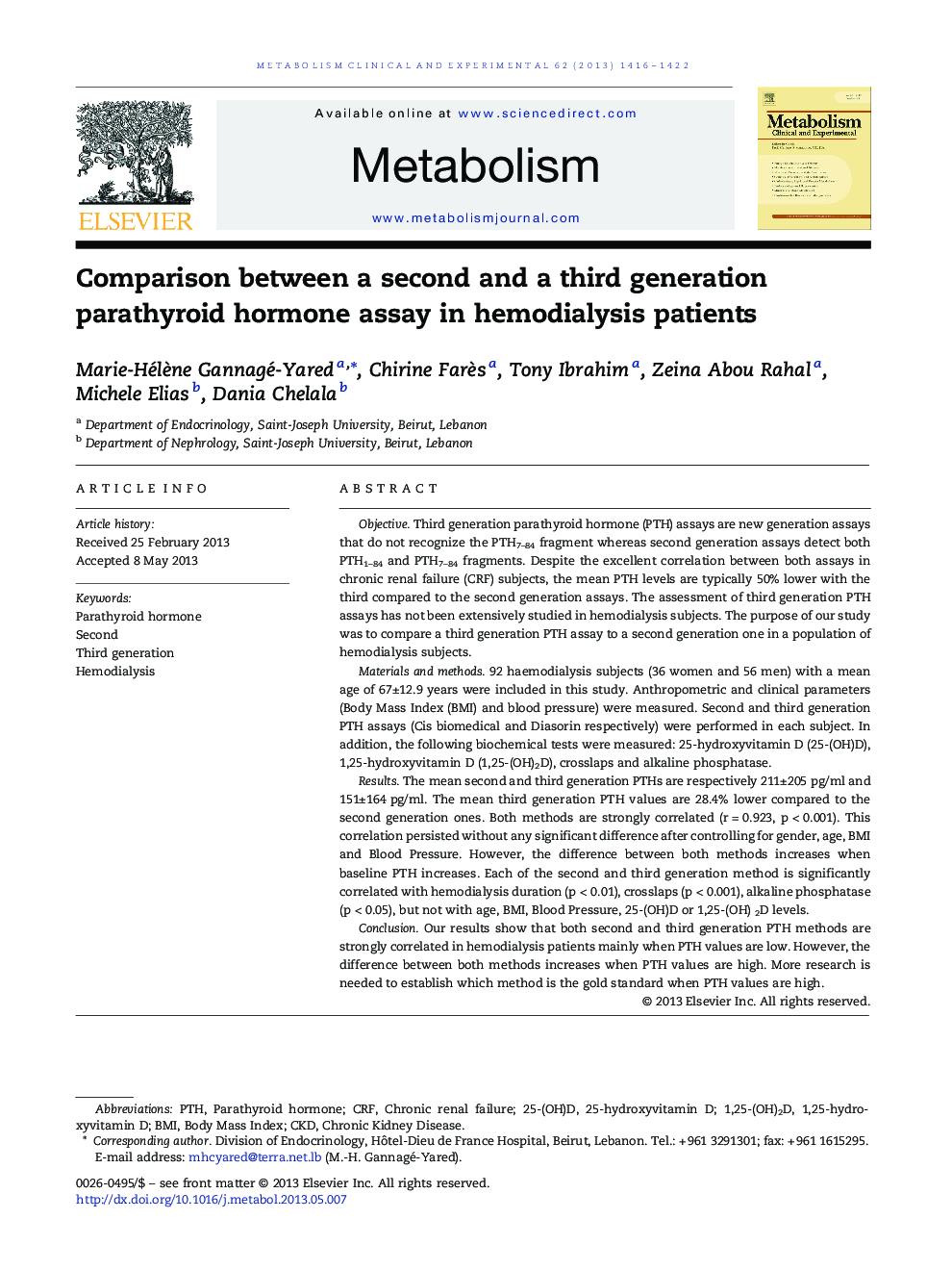| Article ID | Journal | Published Year | Pages | File Type |
|---|---|---|---|---|
| 2805917 | Metabolism | 2013 | 7 Pages |
ObjectiveThird generation parathyroid hormone (PTH) assays are new generation assays that do not recognize the PTH7–84 fragment whereas second generation assays detect both PTH1–84 and PTH7–84 fragments. Despite the excellent correlation between both assays in chronic renal failure (CRF) subjects, the mean PTH levels are typically 50% lower with the third compared to the second generation assays. The assessment of third generation PTH assays has not been extensively studied in hemodialysis subjects. The purpose of our study was to compare a third generation PTH assay to a second generation one in a population of hemodialysis subjects.Materials and methods92 haemodialysis subjects (36 women and 56 men) with a mean age of 67±12.9 years were included in this study. Anthropometric and clinical parameters (Body Mass Index (BMI) and blood pressure) were measured. Second and third generation PTH assays (Cis biomedical and Diasorin respectively) were performed in each subject. In addition, the following biochemical tests were measured: 25-hydroxyvitamin D (25-(OH)D), 1,25-hydroxyvitamin D (1,25-(OH)2D), crosslaps and alkaline phosphatase.ResultsThe mean second and third generation PTHs are respectively 211±205 pg/ml and 151±164 pg/ml. The mean third generation PTH values are 28.4% lower compared to the second generation ones. Both methods are strongly correlated (r = 0.923, p < 0.001). This correlation persisted without any significant difference after controlling for gender, age, BMI and Blood Pressure. However, the difference between both methods increases when baseline PTH increases. Each of the second and third generation method is significantly correlated with hemodialysis duration (p < 0.01), crosslaps (p < 0.001), alkaline phosphatase (p < 0.05), but not with age, BMI, Blood Pressure, 25-(OH)D or 1,25-(OH) 2D levels.ConclusionOur results show that both second and third generation PTH methods are strongly correlated in hemodialysis patients mainly when PTH values are low. However, the difference between both methods increases when PTH values are high. More research is needed to establish which method is the gold standard when PTH values are high.
